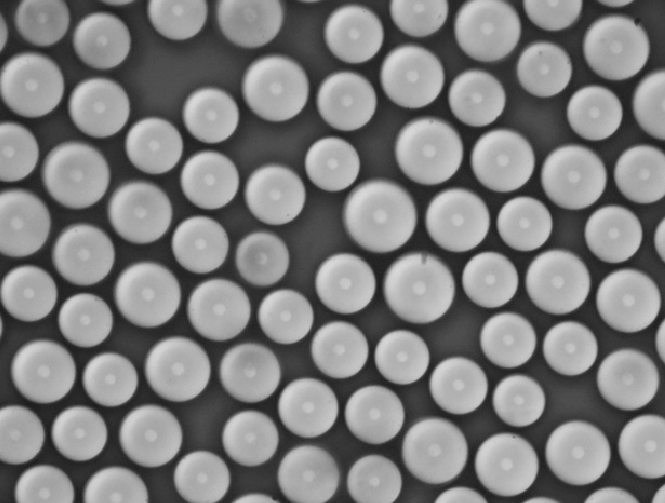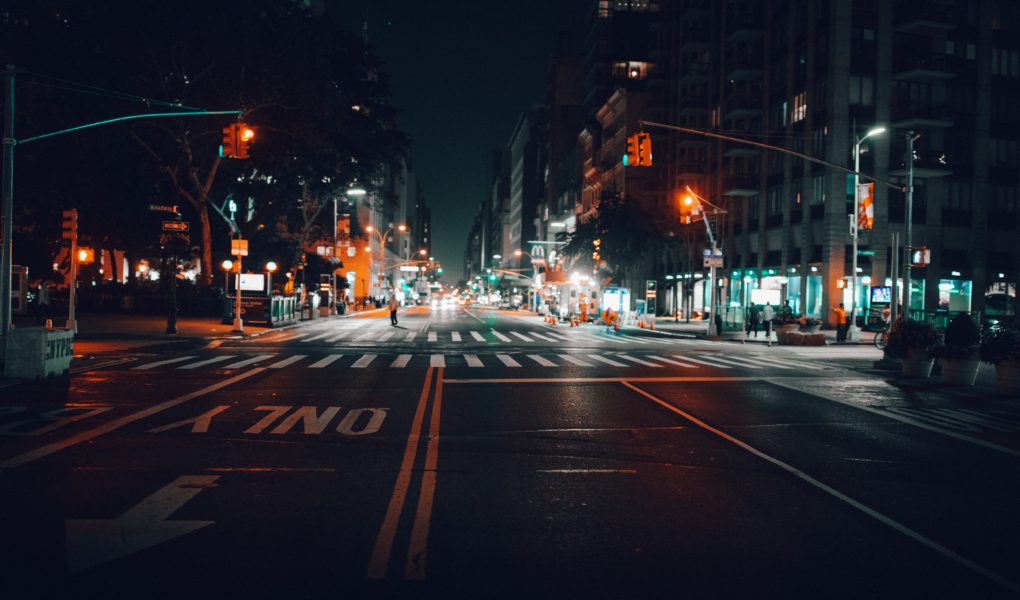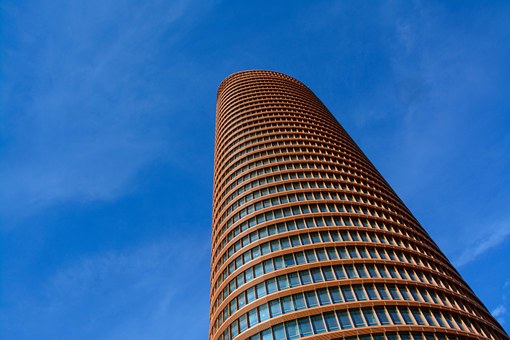Abstract
We encounter retroreflective materials every single day: at street corners, on crosswalks, and almost anywhere that cars can go. They mostly go unnoticed during the day, but under the cover of darkness, the roads become an optical playground. Light on the road is designed to go back towards the direction from which it came during dark conditions. This optical phenomenon is called retroreflection, and it makes nighttime driving safer by increasing the visibility of road markings and traffic signs.
Introduction
You are a passenger in a vehicle, cruising down the road at night. Take a look ahead of you. What you see could never match up to the brilliant sparkle of Guy Diamond from the 2016 Dreamworks hit, Trolls, but I would argue that it comes pretty close. The traffic sign that your vehicle approaches has a strong, eye-catching shine, while the road paint within your line of sight glows with almost otherworldly radiance.
This light, which is caused by retroreflection, helps drivers see just about everything that is important to see. What if there was no retroreflection at night? You would be in serious danger of collisions unless you slowed down considerably. And forget about the freeway; your life would be at risk when making sharp turns or merging lanes! According to a study conducted by the Federal Highway Administration, crash frequency decreases as retroreflectivity increases. The study also found that drivers can see an average distance of 300 feet down a road at night at the minimum retroreflectivity level in California [1]. Driving at night is possible — and is safer — thanks to retroreflection.
What is Retroreflection?
Retroreflection occurs when a light beam returns in a path parallel from which it came, as demonstrated in Figure 1. Beyond road use, retroreflection is used in aerial and maritime radar technology.

Traffic signs, bike reflectors, safety vest tape, and other materials that glow when light is cast on them are popularly called “reflective,” but these items are actually retroreflective. In regular reflection, the reflected beam does not go back towards the direction from which it originated. In Figure 2, an incoming light ray that strikes a surface (the incident ray) and the regularly reflected ray must form equivalent angles to the normal of the smooth surface [2]. A regularly reflected ray travels far away from its source according to the law of reflection. Retroreflection is not regular reflection. Instead, retroreflection involves multiple regular reflections to manipulate a light beam to return to its source.

Retroreflection in Road Paint and Traffic Signs
When a road is painted, transparent glass spheres (commonly called beads) are scattered onto the fresh paint. These beads act as retroreflectors. Roads are painted with melted thermoplastic, so the plastic-like paint will harden with the beads embedded on the surface [4]. For long-lasting retroreflection, glass beads can also be mixed into the paint prior to application. Beads covered by paint cannot act as retroreflectors, but they work properly once the paint wears down and they are exposed to the surface. An observer would be unable to discern beads even if they are on the paint surface. These beads can range from 100 to 1500 microns in diameter [5]. For reference, they range from the thickness of a sheet of paper to the size of a grain of sand. The presence of millions of these incredibly tiny beads helps road markings shine brightly as a car with headlights approaches.



Glass Beads as Retroreflectors
The retroreflectivity of road markings and beaded retroreflective sheeting can be attributed to the transparent glass beads embedded into them. A combination of regular reflections and a phenomenon called refraction occur inside these beads to create retroreflection.
Refraction occurs when an incident light ray travelling in a transparent medium, such as air, strikes the surface of another transparent medium, such as glass. A light beam will split into two light beams at the boundary of transparent surfaces. One beam behaves per the law of reflection from Figure 2 and reflects off the transparent surface. The other beam crosses the boundary and into the new medium instead of reflecting. More often than not, this light beam will bend upon entry. The incident ray and this new ray (the refracted ray) form different angles with the normal of the surface, seen in Figure 6 [2]. This bending phenomenon is called refraction.


Figure 7 follows the path of a beam of light that meets the right conditions to be retroreflected in a glass bead. Light from headlights shines on nearby road markings, and the incident light beams strike the glass bead surface, as in Figure 7a. The incident beam will split into a reflected beam— which is irrelevant to retroreflection— and a refracted beam— which is important to retroreflection. The refracted beam makes a smaller angle to the normal compared to the incident beam. This allows the refracted beam to strike the paint at the back of the bead, as in Figure 7b. It is crucial that the beam reaches the paint-glass boundary. A majority of observed retroreflection stems from reflection off this part of the bead [10]. The beam reflects off of the paint-glass boundary, as in Figure 7c, but no simultaneous refraction occurs because the paint is not transparent. After returning to the boundary, this beam splits into two. The beam that reflects and remains in the glass is irrelevant to retroreflection. The beam that refracts as it exits the glass and enters the air, as in Figure 7d, travels parallel to the original incident beam. In traffic signs made with microbead retroreflective sheeting, this same process occurs to return light to its source. The only difference is that, instead of reflecting off paint as in Figure 7c, light must reflect off the sheeting that the microbeads are embedded in.

Not all light will bounce back parallel to the initial beam. Some beams never enter the bead, and some don’t strike the bead at a favorable angle. But enough beams will retro-reflect for the driver to perceive the road markings and drive on.
Microprisms as Retroreflectors
Traffic signs made from repeated microscopic prisms are as prevalent as signs made from microbeads. A microprism is an extremely small corner cube prism. The basic construction of a corner cube prism, shown in Figure 8, is true to its name. It is one corner of a cube that is composed of three faces. However, a corner cube prism doesn’t need to literally be cubic. It typically isn’t cubic when used as a retroreflector. So long as the retroreflector has three regularly reflective faces at 90° angles to one another, it is a corner “cube” prism [11]. For example, Figure 9 is a corner cube prism constructed from 3 triangular faces. This triangular form is the most common shape for microprisms in retroreflective sheeting.


Conclusion
Retroreflection itself stays unchanged, but retroreflection technology is far from stagnant. Companies have been developing increasingly brighter retroreflective beads, sheetings, and tapes. Sonar, which involves retroreflection, is improving in accuracy and effectiveness. Retroreflection has and still is being utilized in space to learn more about our moon. In the future, retroreflection will continue to be indispensable for research and safety technology.
Further Reading
- The history of retroreflective sheeting, from inception to popular usage: https://reflectivetape.info/history_of_reflective_tape/
- Color-changing traffic signs could be part of our future: https://www.osa-opn.org/home/newsroom/2019/august/retroreflective_structural_colors/
- Retroreflection beyond Earth; NASA has a new addition to its collection of retroreflectors on the moon: https://www.space.com/next-gen-apollo-moon-laser-reflector-on-india-mission.html
References
[1] Synthesis of Pavement Marking Research, Federal Highway Administration, June 2015, pp.8-10. [Online]. Available: https://safety.fhwa.dot.gov/roadway_dept/night_visib/pavement_marking/pvmnt_mrkg_synth.pdf.
[2] R. A. Serway and J. W. Jewett, “The Nature of Light and the Principles of Ray Optics,” in Physics for Scientists and Engineers with Modern Physics, 10th ed. Cengage, 2017, pp.902–908.
[3] “Physics Tutorial: The Role of Light to Sight,” The Physics Classroom. [Online]. Available: https://www.physicsclassroom.com/class/refln/Lesson-1/The-Role-of-Light-to-Sight.
[4] “Thermoplastic Road Marking Paint.” [Online]. Available: https://www.tenroadsglass.com/products/thermoplastic-traffic-road-line-marking-paint.html#:~:text=Thermoplastic%20paint%20is%20a%20road,reflection%2C%20and%20long%20service%20life.
[5] “Using Glass Bead Composite Paints for Reflective Roads,” AZoM.com, Jul 2018. [Online]. Available: https://www.azom.com/article.aspx?ArticleID=16292.
[6] “Reflective Glass Beads for Road & Runway Markings – Potters Beads,” Potters, Dec 2020. [Online]. Available: https://www.pottersindustries.com/reflective-beads/.
[7] “Retroreflective Sheeting Identification Guide,” [Online]. Available: http://www.dot.state.mn.us/trafficeng/signing/doc/retroreflectivesheetingIDguide.pdf.
[8] G. Burgess, M. R. Shortis, P. Scott, Photographic assessment of retroreflective film properties, ISPRS Journal of Photogrammetry and Remote Sensing, July 2011.
[9] O. Sanchez Jr. et al., CHARACTERIZATION OF THE INTENSITY DISTRIBUTION IN RETROREFLECTIVE ADHESIVES WITH NEAR FIELD GONIOPHOTOMETRY, 29th CIE Session, 2019.
[10] K. Vedam and M. D. Stoudt, “Retroreflection from spherical glass beads in highway pavement markings 2: Diffuse reflection (a first approximation calculation),” Applied Optics, vol. 17, no. 12, p. 1859, 1978.
[11] “Corner Cube Prisms,” RP Photonics Encyclopedia, June 2020. [Online]. Available: https://www.rp-photonics.com/corner_cube_prisms.html.
[12] “Wolfram Demonstrations Project,” Corner Reflector. [Online]. Available: https://demonstrations.wolfram.com/CornerReflector/.
[13] J. H. Hannay and T. M. Haeusser, “Retroreflection by Refraction,” Journal of Modern Optics, vol. 40, no. 8, p. 1437, 1993. [Online]. Available: https://doi.org/10.1080/09500349314551501.
[14] “Why do pavement markings disappear in the rain?,” 3M. [Online]. Available: https://www.3m.com/3M/en_US/road-safety-us/resources/road-transportation-safety-center-blog/full-story/~/why-do-pavement-markings-disappear-in-the-rain/?storyid=90b6c8e2-1c04-4491-adc6-9df3e09f022d.




